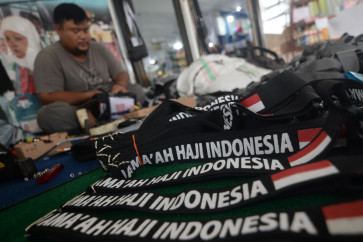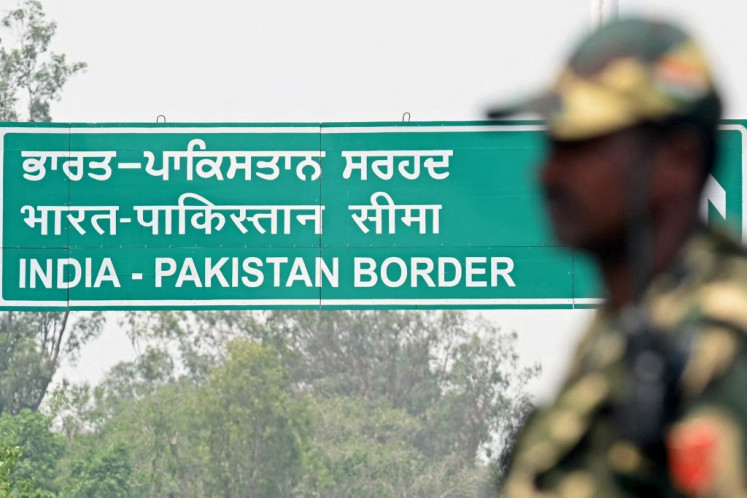Challenges for Indonesian airport development
The issue of nonperforming airports raises a question about planning, including feasibility studies regarding the outlook of traffic demand and the economic multiplier impact.
Change text size
Gift Premium Articles
to Anyone

A
s a vast archipelagic country, Indonesia requires a reliable transportation system to run an efficient logistics sector and facilitate connectivity between its islands. Air transportation, besides sea and land, is one of the most suitable modes.
Enhanced air connectivity through air transportation links is essential for economic growth because it facilitates access to the region for business, culture and tourism, as well as physical access to resources and markets. There are expansions of domestic and regional trade which requires air logistics – not merely with pioneer routes around Papua.
According to the Directorate General of Civil Aviation, there are now around 340 airports and airfields across the country. Of that total, 32 airports are classified as international airports and the rest are classified into class I, class II, class III or work units.
Not all airports can operate effectively. Jenderal Besar Soedirman Airport in Purbalingga, Central Java, Ngloram Airport in Blora, Central Java, and Kertajati Airport in Majalengka, West Java, are examples of state-funded airports that operate far below capacity due to lack of traffic.
Banyuwangi Airport at the easternmost tip of Java brings another story of a poorly performing facility. The airport’s terminal won the Aga Khan Award for Architecture in 2022, and it is deemed as an Indonesian green airport. However, the traffic to this airport does not match its architectural achievement. Dependence on subsidies is an issue, and the Banyuwangi-Jakarta-Kuala Lumpur international route has failed to sustain it.
Immigration facilities are available there, serving especially Indonesian migrant workers. In fact, Banyuwangi is a major migrant worker supplying region.
The issue of nonperforming airports raises a question about planning, including feasibility studies as regards the outlook of traffic demand and the multiplier economic impact.
A public-private partnership (PPP) scheme could reduce the burden of state budget financing. Presidential Regulation No. 38/2015, as the legal basis for PPPs, allows government and private collaboration in the infrastructure sector. This includes airport construction and operation.
Komodo Airport in Labuan Bajo, East Nusa Tenggara, Singkawang Airport in West Kalimantan and Dhoho Airport in Kediri, East Java, are the examples of airport construction projects under the PPP scheme.
Komodo Airport marks a significant milestone as the first Indonesian airport built through the PPP arrangement. A joint venture between Cardig Aero Services and Changi Airports International as operator, the project had a total investment of Rp 1.2 trillion (US$80 million) and operates under a 25 year concession. The investors are guaranteed the right to charge fees on both aeronautical and non-aeronautical services. The government, for its part, has fully supported the land acquisition.
With a runway of 2,250 meters, Komodo Airport is capable of handling wide-body aircraft such as the Airbus A320 and Boeing 737 series. Previously it was limited to smaller aircraft such as ATR.
According to the Investment Coordinating Board, the Rp 4.3 trillion Singkawang airport project is being offered to private investors under a 32-year concession period. Currently at the pre-qualification stage, the bid process is scheduled to be held from December of this year to April 2024. The government has also provided a guarantee to assist in land acquisition.
Dhoho Airport in Kediri, East Java, is scheduled for operation in October of this year. Financed by Surya Dhoho Investama, a subsidiary of the cigarette giant PT Gudang Garam under the PPP scheme, the Rp 10.8 trillion project will have a concession of 50 years and will be able to handle wide-body aircraft.
Currently the airport construction has achieved 72 percent progress. The local government supports the land acquisition. The main objective is to make the airport a pilgrimage embarkation point and logistics hub. It will be the third international airport in East Java besides Juanda Airport in Surabaya and Banyuwangi Airport.
However, national defense and security should also be taken into account in the construction of Dhoho Airport. The reason is the Indonesian Air Force airbase in Madiun has a fighter squadron that is situated close to Dhoho Airport.
Operational issues from a civil-military perspective should be considered, which also refers to legal certainty in aeronautical information publication on prohibited areas. Security for civil flights should not be compromised.
The national airspace management bill could bring solutions to this situation on time.
***
Yaries Mahardika Putro is a lecturer in air and space law at the University of Surabaya School of Law. Ridha Aditya Nugraha is a lecturer in air and space law studies at Prasetiya Mulya University. The views expressed are their own.









